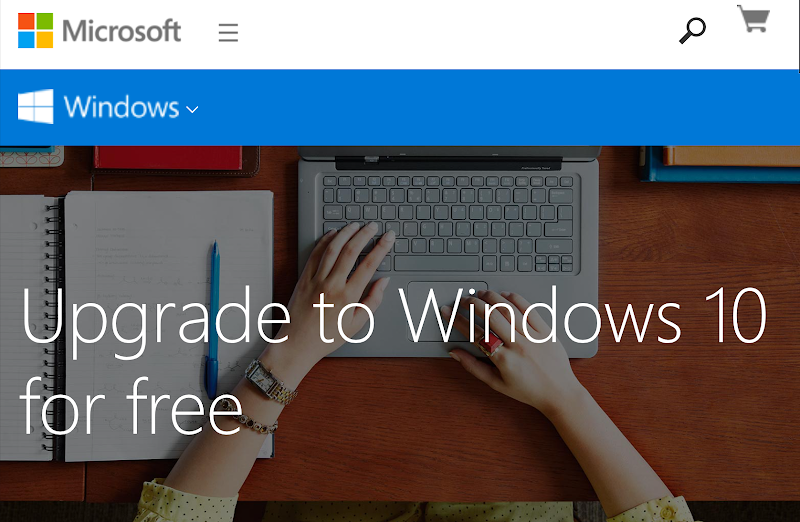To celebrate 10 years of Creator Weekly, I’m sharing tech highlights from 2015 that still resonate 10 years later. This update was for the week ending July 18, 2015.
In July 2015 Microsoft
Windows 10 launched in 190 countries as a free upgrade
from "genuine" Windows 7 and Windows 8 devices.
Ten years ago Microsoft launched Windows 10 as a free upgrade. But was it
really free?
The first free Windows system upgrade
This was announced as a limited time offer, but the
free upgrade was actually available through 2023.
Apple had made this shift in 2013, offering free OS upgrades for life starting with OS X Mavericks.
Apple had made this shift in 2013, offering free OS upgrades for life starting with OS X Mavericks.
What was the advantage of free Windows upgrades?
Older folks (like me) remember when it was a huge hassle to update your
computer's system software. You had to go out and purchase the updated
software (in some cases costing upwards of $100), then spend hours loading and
installing from multiple disks. And you hoped that the update wouldn't break
anything.
Some people just never updated their PCs, because it was too expensive or too
complicated. Other people pirated Windows so they wouldn't have to pay, and
ended up installing cracked versions infested with malware.
Making Windows 10 free meant more people would be likely to update their
systems in a timely way with a genuine version of Windows.
And Microsoft
had an entire ecosystem
of devices that would run Windows 10:
Windows 10 offers one experience that will become available on the broadest range of devices, including PCs, tablets, phones, Raspberry Pi, Xbox One, HoloLens and more — with more than 2,000 devices or configurations already in testing.
Getting people to upgrade to Windows 10 was good for security and for
developers creating software for Microsoft's various devices.
As it was pointed out at the time, every device needs a Windows license. That is added to the cost of hardware by the manufacturers.
And Windows 10 was hooked into Microsoft's services. The Edge browser launched with Windows 10, and Microsoft also offered OneDrive storage, Bing search (where Microsoft sold ads), and various entertainment media.
And you have little choice about new features you may not want.
Lately I've heard concerns about the integration of Microsoft’s AI Copilot into the latest versions of Windows 11. Users trying to avoid AI aren't updating, but they will likely be forced to upgrade eventually.
Brad Chacos, PC World, 6 August 2015: Why Windows 10 isn't really free: The subtle new world of built-in costs
Is Windows really free?
TANSTAAFL as the saying goes.
As it was pointed out at the time, every device needs a Windows license. That is added to the cost of hardware by the manufacturers.
And Windows 10 was hooked into Microsoft's services. The Edge browser launched with Windows 10, and Microsoft also offered OneDrive storage, Bing search (where Microsoft sold ads), and various entertainment media.
Not all of those were free. For example Microsoft stopped offering unlimited OneDrive storage to Office 365 subscribers and even reduced the
amount of free storage later that year.
And users needed Windows 10 to access the latest features across Microsoft's
whole range of devices.
So getting everyone to upgrade to Windows 10 helped push users into the
Windows ecosystem, which, of course, benefited Microsoft.
The View from 2025
System updates continue to be free for Windows, Macs, Chromebooks and your
mobile devices.
You don’t pay for those updates directly, you pay for them
indirectly.
And you have little choice about new features you may not want.
Lately I've heard concerns about the integration of Microsoft’s AI Copilot into the latest versions of Windows 11. Users trying to avoid AI aren't updating, but they will likely be forced to upgrade eventually.
References
Microsoft News Center, 28 July 2015:
Windows 10 available in 190 countries as a free upgrade.
Brad Chacos, PC World, 6 August 2015: Why Windows 10 isn't really free: The subtle new world of built-in costs


Comments
Post a Comment
Spam and personal attacks are not allowed. Any comment may be removed at my own discretion ~ Peggy